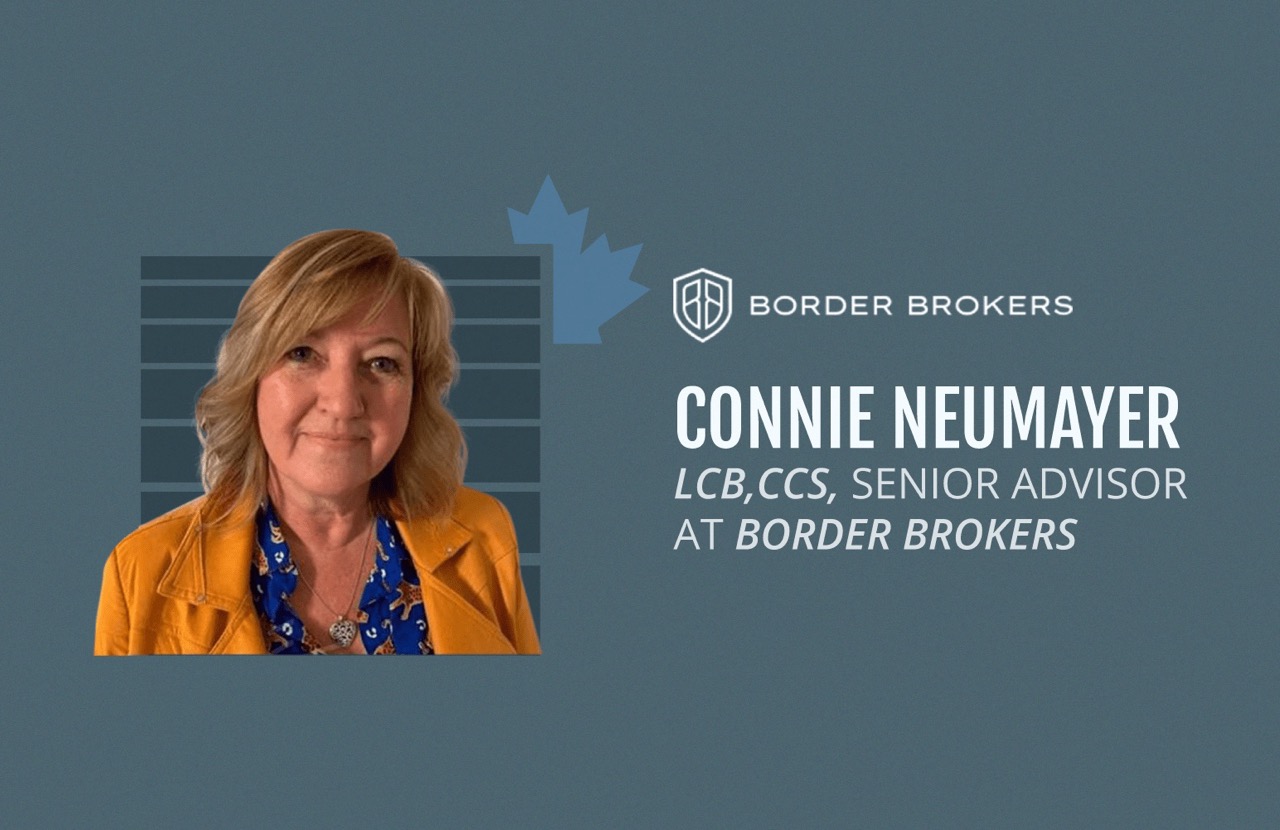
Connie Neumayer of Border Brokers shines light upon importing to the US using Section 321, managing exceptions, and selecting a good broker.
“People really need to do their due diligence before they start going down that path of importing,” says Connie Neumayer. “It’s really important.”
Neumayer is a Senior Trade Adviser at Border Brokers, a custom clearance service and import/export broker that often partners with their number one logistics provider Canadian Alliance Terminals.
Neumayer helps her clients navigate the intricacies of the process, ensuring that they’re not caught unaware at any point. She shared information about the U.S. Section 321 program, as well as perspectives on tariffs, exclusions, and the importance of getting it right.
Utilizing Section 321
U.S. Section 321 allows for the duty-free import of goods valued at $800 or less per shipment into the United States. The regulation aims to streamline cross-border e-commerce by reducing costs and paperwork for low-value imports, promoting efficiency in customs processing.
“It really didn’t come into play that often until the threshold increased from $200 to $800,” says Neumayer.
As she explains, the threshold of $800 applies to articles imported by one person on one day each item, so long as the items are destined for individual buyers. For example, 500 items, valued at $100 each, all purchased by the same individual or company, would exceed the threshold and therefore not qualify. If those same 500 items were being sent to 500 recipients, they would be covered by the program.
“There are literally containers full of goods arriving in the US directly from China that are coming in under section 321 because they’ve been ordered by individuals online,” she says.
There are some goods that can not be imported under the Section 321 de minimis exemption. It is important to refer to the CBP website to understand this program. E-Commerce Frequently Asked Questions | U.S. Customs and Border Protection (cbp.gov)
Shipping to Canada, Then the US, Through Section 321
Overseas companies looking to ship to both Canada and the US can also take advantage of the program. Products can be sent to a Canadian receiver such as Canadian Alliance Terminals. From there, the portion of the shipment bound for the US can be sent south across the border, covered by the program, as long as they meet CBP regulations
Neumayer explains that there are several ways that this can be achieved.
“Some companies bring goods into Canada under duty deferral. On qualifying goods that are subsequently shipped to the US, no duty is ever paid. Items sold within Canada trigger the duty payment,” she says. “Alternately, companies can pay duty on the goods when they enter Canada, then use duty drawback on goods that leave the country.”
Tariffs, Exceptions, and the Politics of Trade
Neumayer warns that there are numerous exceptions. The issue of forced labour is a hot topic, with new developments unfolding on an ongoing basis.
“There’s been a push in the U.S., at the political level, to exclude goods from China,” she says. “There is currently a long list of classifications that are now subject to higher duty rates on goods manufactured in China
Neumayer says that it’s essential that companies do their homework. Of importance is not the country from which the goods are being shipped, but the origins of the product.
“US companies will think that they’re fine because they’re buying goods from Canada,” she says. “If the goods originated in China, they’ll still have those higher duty rates attached to them. It doesn’t matter that they came through Canada.”
The Importance of Due Diligence
When it comes to navigating the system, the onus is on the importer. In Canada, companies may have a limited window in which to claim money that has been over paid on duties, while the Canadian Border Services Agency (CBSA) has a wider time frame in which to invoke an audit.
According to Neumayer, it’s not just the smaller importers that experience problems.
“I won’t name names, but there are medium and large Canadian importers that do not have anybody internally reviewing their entries or monitoring what their broker is doing,” she said. “They pay out tens of thousands of dollars too much in duty. You can only go back four years to claim duty that was paid incorrectly. Now that same company is being audited by the CBSA, which is not a pleasant experience.”
Choosing a Good Broker
“You have to ensure that you’re working with a broker that will be informative and will help you manage compliance,” warns Neumayer. “It’s important that you’re able to communicate well with them, otherwise you’ll be leaving yourself exposed to liability going forward.”
She says that not all customs brokers operate the same way, some may be focused on providing a customs clearance function through a very automated or data entry model. If your broker does not have a good understanding of your business and your products, costly errors could be made.
For these reasons, Neumayer advises importers to give careful consideration to their broker of choice along with having a competent team of logistics professionals at Canadian Alliance Terminals ready to process shipments into the US or across Canada
“Importers should not only assess their options when they start out, but should reassess their brokerage services every two years, at minimum,” she says.
Cited Sources
1 Direct Communication with Connie Neumayer
